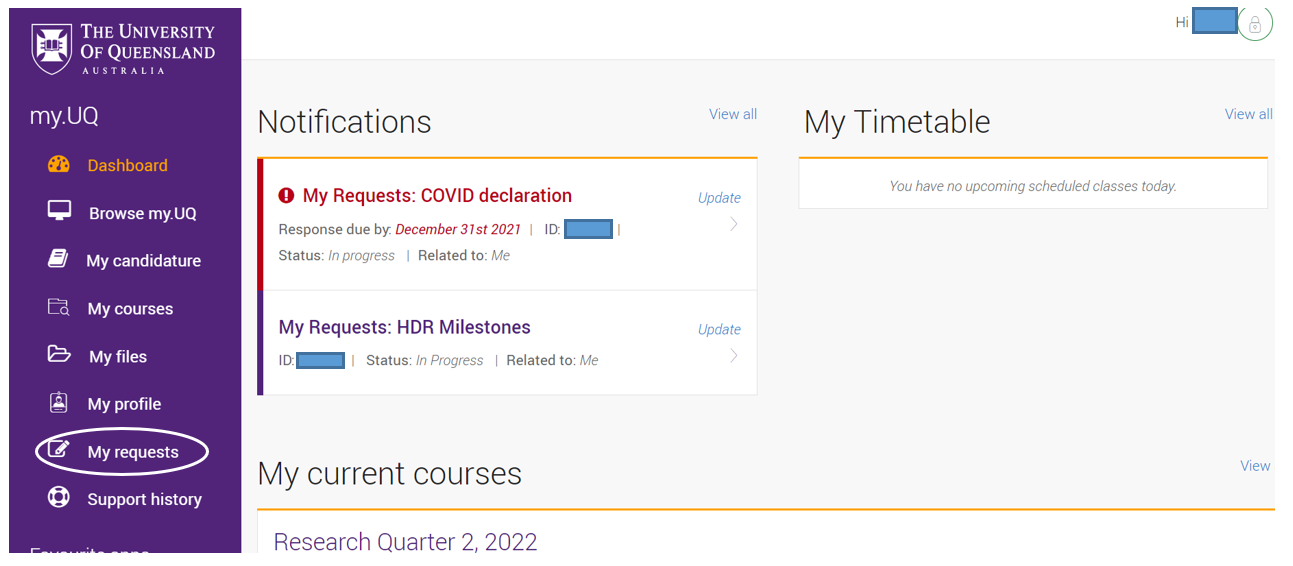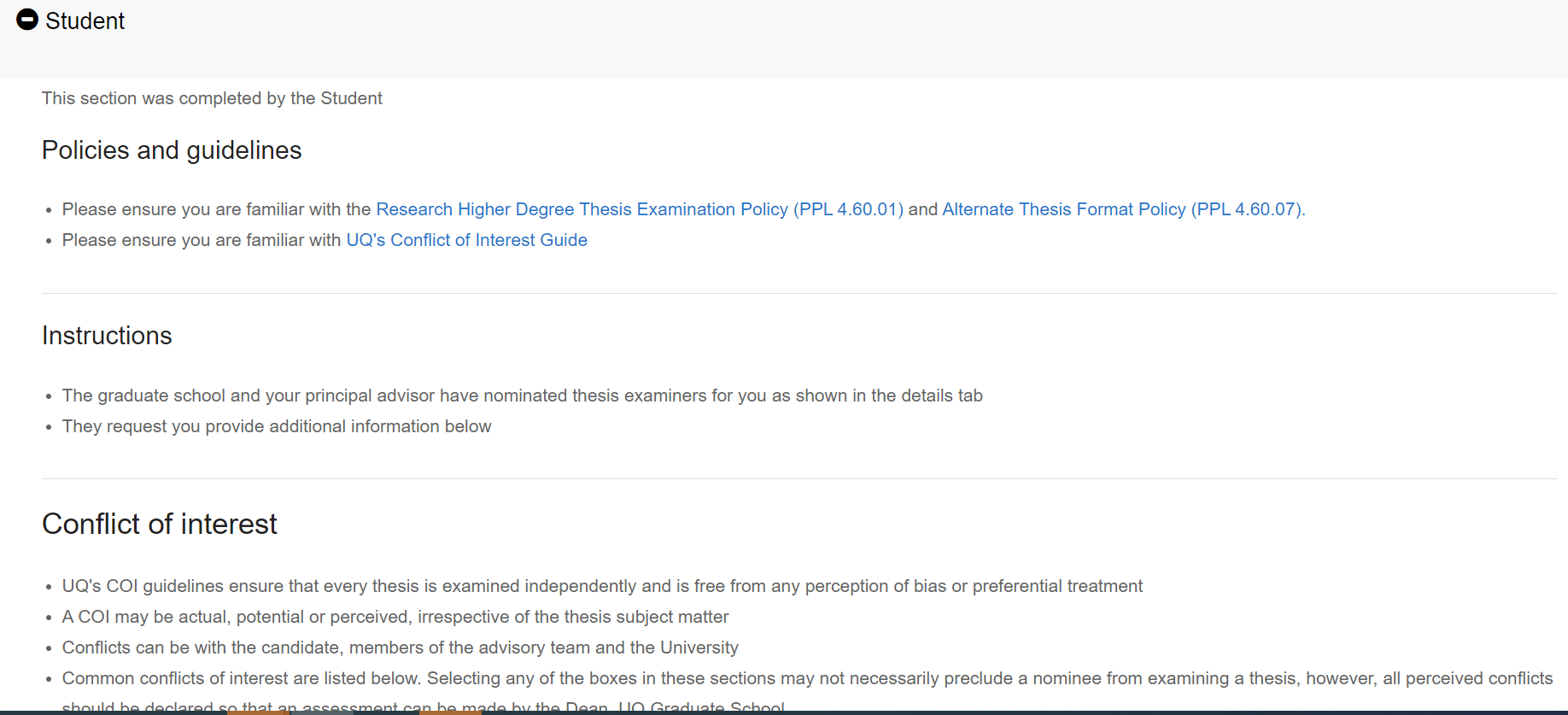Reviewing nominated examiners
Instructions for reviewing nominated examiners as a candidate undertaking an HDR thesis examination.
When you have successfully completed Progress Review 3, the Graduate School will initiate the HDR Thesis Examinations (HTE) request via myUQ, which is first sent to your Principal Advisor. This request, which stays open for the whole examination period, facilitates a process where:
- Your Principal Advisor nominates examiners and the Chair of examiners, noting any perceived conflict of interest
- Your Director of HDR studies (DHDR) reviews and endorses the nominated Chair of examiners
- The Chair is invited to accept the role
- You indicate any conflict of interest and upload a copy of your abstract to be sent to examiners
When your principal advisor has nominated thesis examiners and the Chair of examiners has accepted their invitation to act as Chair, you will receive an email notification with a link to complete a task via your my.UQ dashboard > My requests.
Step 1: Open the HTE request
Log onto my.UQ with your student credentials and then choose myRequests in the panel on the left and then click on the blue arrow on the right of the HTE request to open it.

Step 2: Review the nominated examiners
To review the nominated examiners, navigate to the "Detail" section and expand the “Principal Advisor” subsection, by clicking on the plus sign.

After expanding the "Principal Advisor" subsection, scroll down and you should see a table under “Nominated examiners” showing the names of all the examiners who have been nominated by your Principal Advisor.

It is recommended that Principal Advisors informally contact examiners to check their availability and willingness to examine before they are nominated. You should check with your advisor that this has been done, to avoid examiners declining the formal invitation from the Graduate School. Remember, at no stage in the examination process are you, the candidate, allowed to make contact with the examiners, otherwise, the examination may be significantly compromised and may have to be restarted with new examiners.
Step 3: Declare conflict of interest
Click on the plus sign next to "Student".

You should see information and instructions to help you make a correct declaration of any conflicts of interest.

If you have actual, potential, or perceived conflicts to declare, complete the conflict of interest disclosure section of the form, and provide as much information as possible in the comments box, so that the Dean can determine whether the conflict(s) can be managed.

If you believe that you do not have any conflicts, you can leave this section unchecked.
Step 4: Attach Abstract
In the “Documents” section click the “Add document” icon and upload your abstract.
Step 5: Submit
When you are ready to submit, click “Submit” at the bottom of the page. If the Submit button is greyed out, this means that required information in the form is missing. Once you have provided all the required information you will be able to submit the request.
What happens next?
Once you have done your part in the HTE request, it will be routed to the Graduate School to review the nominated examiners and nominated Chair. You may be required to repeat the steps above if, for example, any COIs are deemed unmanageable, or the invited examiners decline the invitation, or — at a later stage — the Chair becomes unavailable.
The next step for you is to lodge your thesis via Research Data Manager (RDM). Make sure that you are preparing your thesis correctly for submission.
